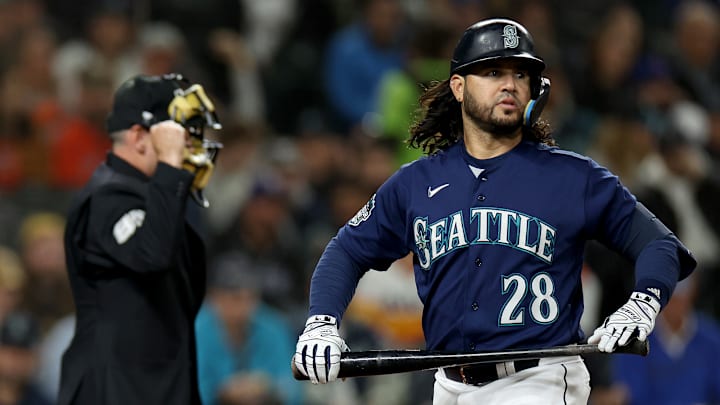The Diagnosis
With his slugging percentage being the only part of his slash line to see a significant decline, Lets dive deeper to find why. He had 11 more hits and five more doubles in 2023 than he did in 2022 but this could be attributed to the extra 55 at-bats he had. He also had nine more home runs and two more triples, giving him a grand total of 249 total bases in 2022, 15 more than 2023. This means that the difference in slugging was largely driven by the fewer home runs, but let's get even deeper and see what other aspects of his hitting game took a step back.
While I'm no hitting coach, I tried taking a stab at finding at least some sort of pattern. The spray chart for all of his batted balls in both 2022 and 2023 is a good start.
Placement and forward EV for all of Eugenio Suarez's batted balls, 2022 (left) vs. 2023 (right). pic.twitter.com/BiYGaYlwc5
— Jason Wang (@jasonwang7517) February 6, 2024
While the infield is a bit of a crowded mess, one can see that Suarez seemed to have more hard contact on his pull-side. This becomes a little more clear when we isolate the spray chart to show just his batted balls that ended up as hits.
Placement and forward EV for all of Eugenio Suarez's hits, 2022 (left) and 2023 (right). pic.twitter.com/I70zotzc0u
— Jason Wang (@jasonwang7517) February 6, 2024
A significant portion of his hits in 2023 were on the left side of second base while his hits in 2022 were more spread out. A small yet intriguing piece of information is that the only two triples that Suarez hit in 2022 landed in the right field corner whereas he landed no hits in that same location in 2023. These more lopsided results could be a tell that his approach wasn't projecting well into the future, as it might have made it easier for fielders to position themselves.
This is backed up by Statcast data which saw an increase in pull percentage, a slight increase in straight batted balls, and a decrease in opposite percentage.
